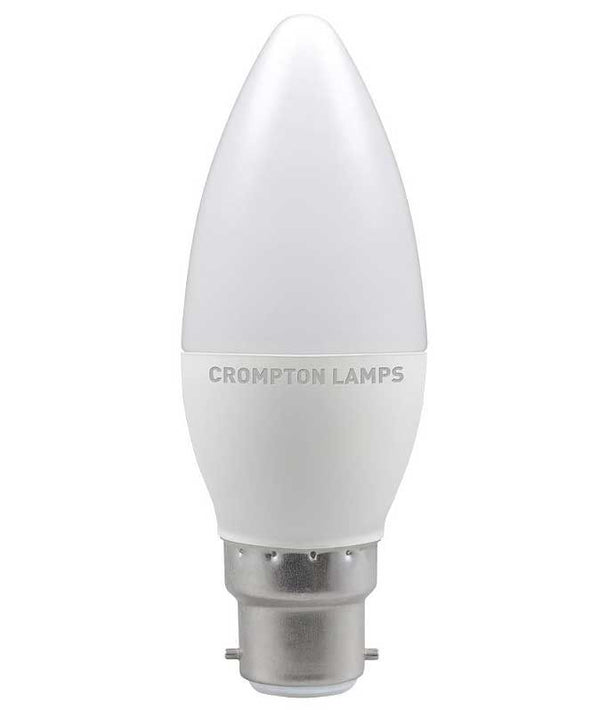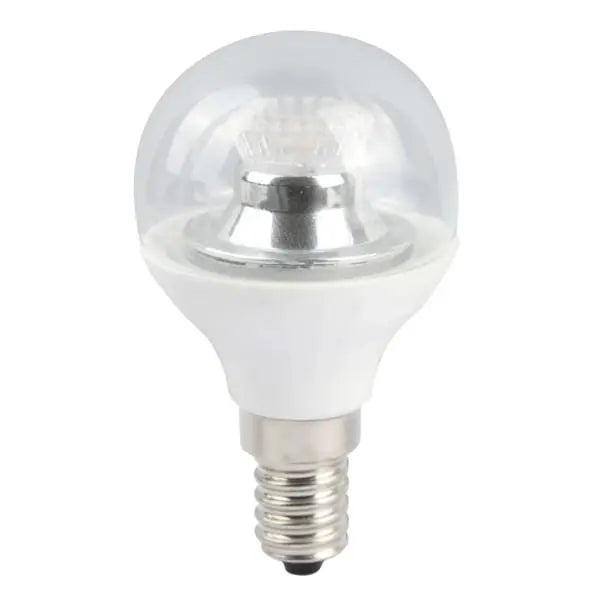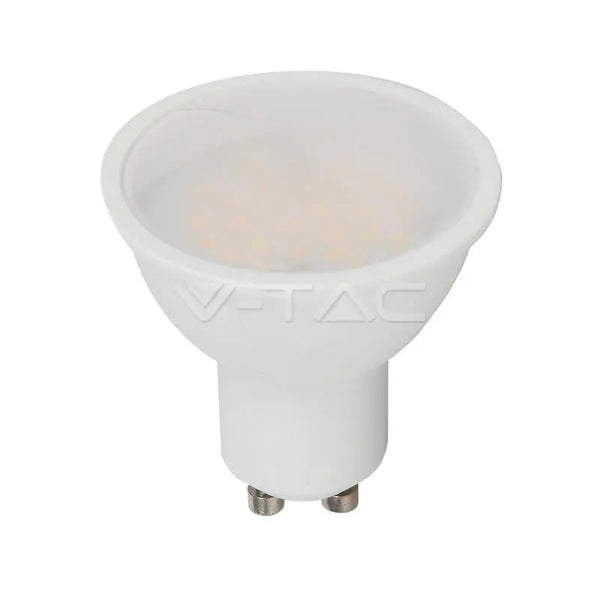Our Guide to Light Bulb Shapes & Sizes
When you think of the word “light bulb”, what shape springs to mind? There’s no right or wrong answer, of course – they come in all shapes. But the original shape of lightbulbs, which can loosely be described as pear-shaped, is actually where the word comes from. “Blubus” is a Latin word meaning a root vegetable, especially an onion. So when the first bulbs were made in that shape, the name stuck.
The shape was perfect for the application. First, it’s easy to make from blown glass. But also, tungsten-filament bulbs needed a vacuum on the inside. A spherical shape is the strongest for this purpose. And finally, a sphere is best for keeping light uniform if the filament is placed right in the middle. That’s particularly true of translucent (pearl) bulbs, which came around in the 1920s.
As the technology moved on, aesthetic design and light distribution have become more important. Modern LED bulbs don’t need to have vacuum inside them, but the traditional shapes have remained, alongside more practical designs. All these factors mean there are endless possibilities when it comes to light bulb shapes.
That said, bulbs do need to fit in fittings, so there needs to be some degree of agreement between lightbulb and fitting manufacturers. Look at how GU10 bulbs have kept their form even though LEDs can be much smaller. This is how we’ve come to a state where there’s a relatively small number of standard light bulb shapes. That’s what we’ll be covering here.
Traditional or teardrop (Type A)
A-series is the traditional bulb shape. Call it pear-shaped, arbitrary, teardrop, traditional or even bulb-shaped if you like – it’s basically a spherical (or near-spherical) head that smoothly transitions into a conical or tubular shape before reaching the fitting.

Bullet (Type B)
Type B is often called a bullet shape, although it tends to taper at both top and bottom, rather like an elongated rugby ball. They have a sleek, elegant appearance and look particularly good in groups, such as a chandelier.

Candle or conical (Type C)
C-Series is the candle-shaped bulb. It’s similar to Type B, except it’s fatter at the connector end and tapers more noticeably towards the top. It’s really like a candle’s flame, rather than a candle, but you get the picture. Again, these can look effective in traditional applications such as chandeliers and wall lights.
(Note that there’s some crossover between C and B – a moderately tapered candle bulb can resemble both types.)

Conical angular (Type CA)
There’s also the CA shape, which is a modification on the theme – it has a curved top so it resembles a flame even more than a C-type. These often come with deliberately flickering LED filaments, to give a convincing living flame illusion.
Globular or golf ball (Type G)
Type G is often referred to as a golf ball light bulb because it’s spherical. That’s a bit of a misnomer, as not all G-Series bulbs are golf-ball sized. G refers to “globular”, and can be any size. However, a good proportion of them are golf-ball sized, so it sometimes is appropriate!

GU10
GU10 bulbs are a specific shape and fitting. It falls into the PAR category (see below), and has evolved from being an incandescent (usually halogen) spotlight to being a mainstay of LED lighting. G refers to the glass front, and U is the pin fitting. 10 is the distance between the centres of the pins. It is such a ubiquitous bulb that it has earned a place in this list, even though it isn’t technically a shape, rather a complete product. Round of applause for GU10!

Parabolic (Type PAR)
Parabolic aluminised reflectors (PARs) are the family of bulbs that include the ubiquitous GU10. They have an umbrella-shaped back that is designed to focus the beam of light from a point (the filament) to a certain direction, like a satellite dish in reverse.
PARs might all look like GU10s, but they are not necessarily the same thing. MR16 bulbs, for example, have two pins that push directly into the socket, and PAR 14, 16, 20, 30 and 38 are screw-in parabolic bulbs of varying size.
Reflector (Type R)
Reflector is the name given to a family of bulbs that have a mirrored surface behind the filament. They are less common nowadays because LEDs only emit light forwards, so placing a reflector behind them would be pointless. They do still exist in those incandescent bulbs that are still allowed, such as heat lamps.
Bulbs are still manufactured with reflectors, however. It’s usually to focus or disperse the beam in a specific way, as opposed to the way LEDs naturally illuminate what’s in front of them. However the same job can often be done by shaping the glass front into a lens.
The specific shape can be reflected (pun intended) in the name, e.g. bulged reflector (BR) or mirror reflector (MR)
Sign (Type S)
These are small bulbs which, as the name suggests, are designed to go behind illuminated signs. They do have certain aesthetic uses, for example in light-up ornaments or illuminated wall art, but they are not designed to cast light particularly far or widely. Grouped together closely, they can pack a punch, but they remain niche bulbs as far as domestic lighting is concerned.
Tubular (Type T)
Tubular bulbs are the classic striplight form. That is, they are long, thin, cylindrical bulbs, originally designed as fluorescent sources. They became common in factories, offices, public buildings and kitchens as they pumped out a lot of light but were more efficient than incandescent lamps.
Several manufacturers now make long tubular LED bulbs to fit directly into legacy mounts, but it’s often better to replace them with modern LED fittings where possible. Tubular lights do of course have some applications, such as when a long, unbroken and consistent light source is required and there’s not enough of a gap for a diffuser to be effective. New installations will usually tend to use other shapes and fittings, however.
The designation T remains, however, the “T” simply meaning tubular. So any cylindrical bulb whose length is multiple times its diameter will fall into this category.
Tubular coils
One innovation of the 1990s was the CFL (compact fluorescent lamp). It’s basically a small tubular lamp that’s twisted into a coil so it has roughly the same size as an A-Series bulb. Green-minded governments actually started handing them out for free to many householders. While a useful stopgap in the post-incandescent world, they were quickly outdone by LED bulbs, which are even more efficient, and are now just as cheap to produce.
Light bulb sizes
When it comes to size, bulbs’ descriptions usually refer to the radius of the bulb at its widest point. However, do note that part of a bulb’s description will refer to its fitting, not the size of the bulb itself. An example would be a B22, which is a 22 mm bayonet fitting – that doesn’t tell you anything about the bulb itself, which could be candle, globular or many of those mentioned above. Obviously the fitting is important, but so is the size, especially if a bulb has to fit in a small shade or mount.
So what should you look for if you need a certain size of bulb? The size designation usually directly follows the letter, such as A60, which is what we might call the “standard” light bulb shape. At its widest point, it is 60 mm in diameter.
Just to confuse matters, there’s a traditional way of measuring bulbs, based on the imperial scheme. And to nail on the confusion, it’s measured in eighths of an inch. So an A19 is nineteen eighths of an inch in diameter. If you recall your top-heavy fractions from school, 19/8″ = 2 3/8″. This format is widely used in the USA, and still has some presence in the UK, but unsurprisingly, the metric format is used in mainland Europe and the rest of the EU.
Generally speaking, you shouldn’t be confused by the two formats. After all, a 19 mm B22 bulb would be narrower than its fitting, so if you see an A19 that looks like an everyday bulb, it’s just using the US format.
A wide selection of LED bulbs
Now you know all about the various shapes and sizing of bulbs, why not pop over to our LED bulbs collection to find the perfect ones for any fitting you have?
